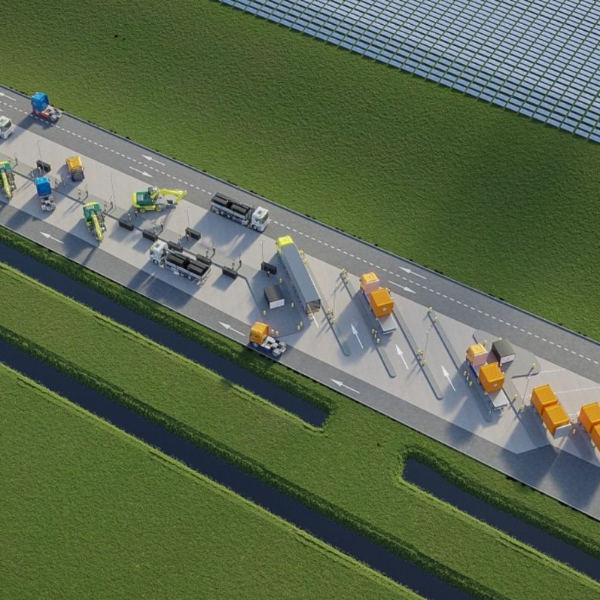Charging infrastructure
The challenge: constructing and optimising large-scale charging infrastructure

Electric charging infrastructure plays a key role in reducing the use of fossil fuels as well as carbon emissions. Not only for road transport, but also for (inland) shipping. Electric charging infrastructure allows electric vehicles to be charged with (green) energy. Electric charging infrastructure can also act as a buffer for renewable energy sources by storing generated energy in batteries of electric vehicles parked at the charging station. This way, electric charging infrastructure can contribute to innovative and technological development in the field of smart grids, thus better matching supply and demand.
In short electric charging infrastructure plays a key role in the energy transition by contributing to reducing the use of fossil fuels, buffering renewable energy resources and innovation in smart grids. Additional charging infrastructure will be needed on a large scale in the coming years. However, increasing the charging infrastructure leads to challenges for grid operators.
Witteveen+Bos plays a key role in the entire process of setting up large-scale and complex charging infrastructure. We establish visions and strategies with our clients and partners and enter into discussions with them at an early stage to identify and implement their mobility and energy needs. We also assist our clients in the follow-up process: from feasibility study to design and from contracting to supervision.
Limited space
The construction of charging infrastructure involves several challenges: spatial integration, connection to the grid and determining an optimal configuration. Witteveen+Bos has expertise in conducting feasibility studies, taking into account integration issues and technical-economic aspects (grid connection, dimensioning, et cetera).
Space, especially in an urban environment, is limited. We can circumvent this thanks to our experience with ingenious solutions. For instance, we created a design to merge two bus depots with electric charging infrastructure at one of the two existing sites. Shared charging hubs also offer the opportunity to gain space while reducing costs (CAPEX/OPEX) and minimising conversion losses at the same time.
Optimal use of smart charging systems
A crucial aspect of high-power charging infrastructure is the optimisation challenge. This is a calculation involving several factors, such as current and future demand, use of the charging infrastructure during a 24-hour period and route schedules.
These puzzles can be solved using smart charging systems. These automatically opt for the right balance between power costs, grid load and renewable energy use.
Mitigating grid congestion
Minimising the risk of grid congestion requires the use of local, sustainably generated energy for the charging infrastructure, which allows excess generated energy to be stored and batteries to be used during peak load times.
More information?

